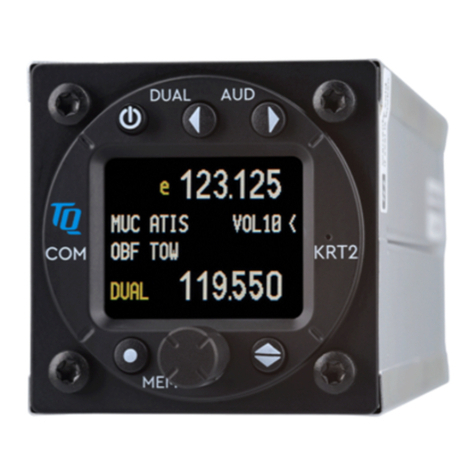Revision 5.0
Software >5.00
3 of 46
TABLE OF CONTENTS
1. GENERAL ...........................................................................................................................5
1.1. Symbols ............................................................................................................................ 5
1.2. Abbreviations.................................................................................................................... 6
1.3. Customer Service.............................................................................................................. 7
1.4. KRT2 Transceiver properties ........................................................................................... 7
2. CONTROL general.............................................................................................................8
2.1. Control Elements Overview ............................................................................................. 8
2.2. Display............................................................................................................................ 10
3. OPERATION .....................................................................................................................12
3.1. General............................................................................................................................ 12
3.2. ON / OFF Switching....................................................................................................... 12
3.3. Frequency Selection ....................................................................................................... 12
3.3.1. Direct Frequency Selection ..................................................................................... 13
3.3.2. Frequency Selection from the Favourites List ........................................................ 13
3.3.3. Storing and Editing Favourites................................................................................ 14
3.4. AUD – Audio Menu ....................................................................................................... 16
3.4.1. VOL – Volume........................................................................................................ 16
3.4.2. SQ -- Squelch .......................................................................................................... 16
3.4.3. VOX – Intercom Voice Trigger Level Setting........................................................ 17
3.4.4. TXm – PTT Switch Selection ................................................................................. 17
3.4.5. INT – Intercom Volume .......................................................................................... 18
3.4.6. EXT – External Audio Input Volume ..................................................................... 18
3.4.7. DIM – Display Brightness (Batt.-voltage) .............................................................. 18
3.4.8. CON – Display Contrast.......................................................................................... 18
3.4.9. SIT – Side tone ........................................................................................................ 18
3.4.10. MIC – Setup......................................................................................................... 19
3.5. DUAL Watch.................................................................................................................. 21
3.6. Transmitter Operation..................................................................................................... 23
3.7. Self test monitor.............................................................................................................. 24
3.7.1. Optical side tone...................................................................................................... 24
3.8. Resetting to factory settings ........................................................................................... 25
3.9. SET UP - Menu .............................................................................................................. 26
3.9.1. ERASE – Erasing the Favourites List ..................................................................... 26
3.9.2. Channel Spacing...................................................................................................... 27
4. Remote Control .................................................................................................................27
5. Installation .........................................................................................................................28
5.1. Installation Hints............................................................................................................. 28
5.2. Telecommunication Data................................................................................................ 28
5.3. Scope of delivery............................................................................................................ 28
5.4. Unpacking and Inspecting the Equipment...................................................................... 29
5.5. Mounting ........................................................................................................................ 29
5.6. Electrical Connections.................................................................................................... 30
5.6.1. Microphone-Connection.......................................................................................... 30
5.6.2. Earphone Connection .............................................................................................. 31




























